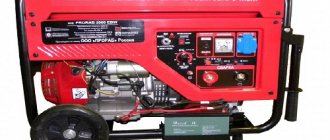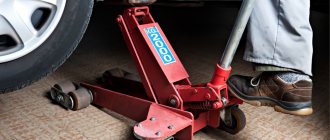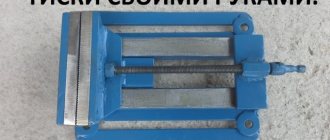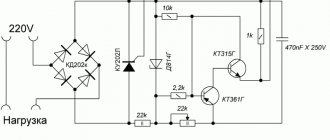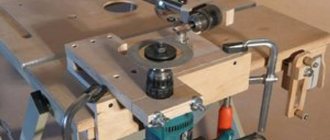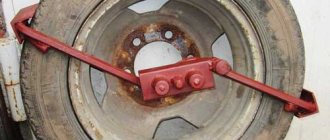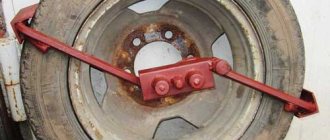Options for homemade hand cultivators
This important function can also be performed with a shovel . But hard work doesn't pay off. Labor efficiency itself increases several times if you use mechanized soil tillage. Any owner of a small plot of land can make a manual plow with his own hands. Special tools may require a welding machine.
It should be noted that soil cultivation began a very long time ago . Several decades ago, at the peak of the garden and dacha lifestyle, such a tool was very popular. It was either bought from factories or made independently.
The most popular types of tools are:
- Flat cutter. This is a tool similar to an ordinary hoe. He is a mechanized version of it.
- Rotary, or star. This plow works on the principle of alternately cutting the soil with knife-shaped stars.
- Cultivator "hedgehogs". It works on the principle of a rotary plow, but the ground is loosened not by knives, but by steel rods that look like a porcupine.
- Tornado. This tool looks like an ordinary pitchfork, but its rods are twisted in a spiral. Additional mechanical devices cannot be installed; it is only a hand tool.
The scope of application of the devices is the widest. Cultivators can perform the following tasks:
- loosen the soil, thereby saturating it with oxygen;
- cut rows for sowing crops and sprinkle them;
- rid plants from the influence of weeds, etc.;
- used together with a walk-behind tractor;
- break up lumps of soil and level the ground.
What is the tool
The most common are hand cultivators, whose weight is no more than 20 kilograms, they are compact and have high productivity .
With this device you can not only loosen the soil, but also remove weeds and apply fertilizers. The tool will also come in handy during the care process after planting the plants; with their help you can perform the following actions:
- hill up the beds;
- thin out;
- loosen the soil between the beds.
Of course, such a hand tool is certainly not comparable in capabilities to a walk-behind tractor, but it is quite suitable for performing the assigned tasks. It can also be used even in hard-to-reach areas.
Cultivators are equipped with cutters, thanks to which they move around the site, and they are the ones who carry out loosening. In addition, it can have the following working attachments:
- paws for thinning and loosening the soil;
- sock for cutting and loosening;
- hiller for cutting furrows for subsequent sowing. Then it will help in the process of hilling the plants;
- a needle-shaped disk, it is needed if the soil is covered with a large crust;
- Feeding knives are equipped with dispensers so that fertilizers can be injected into the soil.
Required materials and tools
In order to always be able to make some necessary products at the dacha, it is necessary to prepare the most popular materials in advance.
First you need to stock up on a lot of steel. It should be in every workshop. The number of different strips, profiles and pipes determines how many necessary tools you can make with your own hands.
Welding will be an indispensable tool in every household. With its help, you can quickly and reliably connect all the parts of various structures. Bolts and nuts are used as an alternative to welding, but the reliability will not be comparable.
Many people do not know where to start when assembling a hand cultivator with their own hands. Drawings are the first thing a novice owner should stock up on . You also need to have the following set of tools and materials:
- Profile made of steel, pipe or fittings. This material will vary depending on the model chosen.
- Wheel and fastening to it. As an alternative, you should take a bicycle frame.
- Handle. For this part, you can use both metal pipes and shovel handles.
- Welding. You can connect parts using welding, or you can use bolts, but it is advisable to have welding.
- Drill with a set of drills.
- Grinder with cutting wheel.
What do you need for work?
To make various devices for soil treatment at home, you need to prepare special materials for this. First of all, you need to take care of getting steel. The more different pipes, sheets or metal rods you have, the better. You can’t do without a set of tools, but they are present in any garage, so you don’t have to bother finding them.
When working with metal pipes, you cannot do without special tools.
A welding machine is one of the most important tools for working with metal products. With it, you can connect different parts made of metal in just a few seconds. Of course, in most cases you can do without a welding machine by connecting the parts using self-tapping screws. But the quality of such connections cannot be compared with the quality of welds.
Inverter welding machine
Cultivator "Tornado"
Making such a cultivator is not difficult. Its base can be made of a metal pipe. It is necessary to weld steel rods to the end of the lower part of the pipe, thereby forming a square shape. After this, the rods are bent in a spiral direction, and the ends are sharpened.
As an alternative, you can use a bicycle handlebar as a lever, and instead of a metal handle, install a shovel shaft. This will significantly save your own effort during work.
Such a device is designed for digging out various roots at great depths, for preparing holes for planting trees, etc. It can be used as an electrophoresis for cultivating the soil with your own hands.
DIY electric cultivator
An electric tool can be made from scrap materials in 2 days, but you need to prepare in advance.
To assemble it you may need: a motor from a washing machine, a gearbox, sprockets and a chain from a children’s bicycle, bearings, cultivator blades welded from car springs, angles, wheels, a cable about 50 m long, a piece of tin to protect the motor from the soil . Instead of a washing machine engine, you can use a powerful Soviet drill, plus a gearbox from a burnt grinder, or an electric meat grinder.
A structure assembled from one or another of the proposed elements will look something like this: a metal frame with two wheels on both sides. The motor from a washing machine, meat grinder or drill is in the center. It needs to be connected to the cultivator blades and ensure rotation using a chain and “sprockets” from a children’s bicycle.
On two handles you can attach a cable with a trigger mechanism.
Advice. The sharpened parts of the knives must be positioned on the side of rotation of the shaft. The blades should be 5 cm apart, at an angle of 120°.
- First, the main parts are made and fastened, then a frame is made for them. The dimensions depend on the available materials you use.
- A gearbox with a transmission mechanism is welded to the engine housing.
- Blades are attached to the output shaft of the gearbox. You can use sharpened and fastened car springs or any other metal.
- The engine is attached to a frame made of angles with clamps and bolts.
- There should be an axle along the central axis with wheels on the sides.
- Handles and cable are welded on top.
- lightweight and convenient electrical design;
- environmentally friendly, unlike gasoline-powered mechanisms. This means that it can be used in greenhouses and greenhouses.
- welding must be used during manufacturing;
- not suitable for processing large areas.
Mechanical improvements not only make labor easier, but also increase the efficiency and speed of tillage. Any of the considered farmer's tools is indispensable when working on the land and is easy to use.
How to make a flat cutter
Many people are looking for a cultivator for weeding. You can make such a weeding machine yourself. A profile pipe made of metal or steel is used as the basis for the frame. This base must be made of 2 parts. You need to weld at an angle of 30 degrees. A wheel fork made of a steel pipe or plate 3 millimeters thick is welded to the frame. The wheel itself can either be made independently or purchased. The steering wheel must be made of 2 steel pipes fixed to the frame.
The horizontal part of the frame is an adapter for the cutting attachment. Then you need to install a knife, which is made of steel tape 2-3 millimeters thick. Then the knives are sharpened. The sharpening angle can be changed or adjustable knives can be installed. If there is an old bicycle on the farm, then all the spare parts can be taken from it. Due to the large diameter of the bicycle wheel, the ride becomes very easy when working. The knife is made in the form of an inverted letter “P”, or T-shape. It should be noted that a T-shaped knife must be used very carefully between rows, as there is a possibility of spoiling the harvest.
A special subtype of the flat cutter is the design with forks. This device has several knives that are attached to a fork. It is made of steel rods, and they, in turn, are curved in a special way.
Option #4: a production meat grinder to help us
All of the above equipment is quite simple. But in your own workshop you can make a homemade electric cultivator. This once again proves that the possibilities of home craftsmen are almost limitless. To implement this idea, you will need an old industrial meat grinder. On its basis, an effective electric gardener’s assistant will be built.
An electric cultivator can be made on the basis of a meat grinder for industrial purposes: you get a fairly powerful unit that will last for several years
Everything is not as difficult as it seems if you have a welding machine and a master who knows how to use it for its intended purpose. Two corners should be attached to the gear housing. Bent pipes are welded to the corners, which will be used as handles. Another piece of pipe is welded between the resulting handles - a spacer, which gives the structure the required strength.
The axles for the cultivator wheels will also need to be welded to the corners. The wheels are selected to be of medium size so that they are easy to use and do not sink into the soil.
The main structural part is the shaft. It will have to be turned out of ordinary scrap. The connection is carried out as in the original: in a slot. The meat grinder attachment is chipped off with a sledgehammer, after which a bushing with thick walls made of cast iron remains. A blank machined from scrap is placed into it, to which lugs in the form of a screw are welded. They are cut from car springs. Other lug material options were used, but these proved to be unviable.
The lugs are located at an angle of 120 degrees. They need to be screwed out as they rotate, then it will be easier for them to enter the ground, and the cultivator itself will be easier to control. The engine of the device is connected according to the “triangle” circuit, the start is capacitor. For ease of operation, the engine switch is installed on the cultivator handle. The device will last a long time if, before starting work, you lubricate the mating of the homemade shaft in the cast iron bushing with any used oil.
Take a good look at what the lugs should be and how they should be positioned: the efficiency of the device and its durability depend on this
The quality of tillage depends on the speed of movement of such a cultivator. Fast plowing will be rough, but slow plowing can literally turn the earth into dust.
Hand plow
Although such a device is called a plow, its intended purpose is contradicted. It does not have the classic properties of a plow. Even two people are not enough to work with such a tool. He is more of a classic cultivator. The device resembles a flat cutter, but an additional traction handle is installed.
Such a structure is handled by one person from the front, who acts as a traction force. And the second, the operator, controls the process of cultivating the land. It is impossible to use such a device without a co-pilot.
It is important to note that such a tool is not suitable for plowing soil for two reasons. The first is that a normal plow turns over layers of soil, but the device only loosens it. In addition, human power alone is not enough for normal plowing of the land.
Rotary or star
Making such a device is not a difficult task. To make the structure, you need 5-7 stars, which will serve as knives, strung onto the axle. These knives can be either straight or curved to the sides. After cultivating the soil with such a tool, it is recommended to walk between the rows and a flat cutter. A combination of two models is also possible, when the stars are first used in the design, and then a flat cutter is used for the final stage. This can significantly save the worker’s strength and energy. Since the stars perform the function of wheels in the design, an additional axle is not needed.
Working with such a tool is quite difficult, so only a physically trained person can handle it. In such a garden structure, you can install wheels of the same diameter instead of stars. In this case, you will get a good weeding hiller.
Cultivator for the Neva walk-behind tractor. Equipment for plowing land
Most often, a motor unit is purchased to be used as a motor cultivator to perform the hardest work on earth: autumn plowing and cultivation of the fertile layer. Thanks to the very large torque output from the gearbox, the power is 7-10 hp. enough to process even loamy or saline soils in several passes.
To restore the soil structure, the manufacturer offers the following tool options for work:
- A plow for a Neva walk-behind tractor with a coupling device is most often equipped with a standard or universal design of a coupling device with a frame. The walk-behind tractor allows you to plow medium-heavy soil, roots and young growth of trees;
- Cultivators and cutters for the Neva MB 2 walk-behind tractor allow you to more deeply and thoroughly fluff up the soil, chop the roots of weeds, turn vegetation debris into mulch, and use the walk-behind tractor as a multi-cultivator.
In addition to the single design, there are paired plows that allow processing with a pair of cutting edges with soil dumping in two rows, as in the photo. But it is recommended to work with such serious devices on the Neva MB 23 or Neva MB23SD motor units.
You should not expect to plow virgin soils with a walk-behind tractor; medium-heavy soil with a lot of roots and weeds is usually too tough for even the heavy MB 23 walk-behind tractors. The Neva was created to work on already plowed soil. In this case, cutters, cultivators, and plows work great.
On salt marshes and clayey soils, the rotational power of the lugs and their weight are not always enough to plow the compacted layer of soil. Often, the hooks are welded with additional weights, for example, flywheels from trucks, which lowers the center of gravity of the walk-behind tractor, makes it more stable and makes it heavier by 20-25 kg. The width of one lug wheel is 210 mm with a diameter of 460 mm.
Using the attachment on the hiller's motorized unit, you can quite successfully loosen the soil, both before planting and to remove weeds in the rows between plants. But working with such a device is quite difficult; knowledge of the specifics of setting up the tool is required.
Cultivator "Hedgehogs"
For the base you need to prepare a powerful fork made of steel strip. In front of the tool there is a working axis with attachments. They need to be made from pieces of pipe onto which steel rods with pointed tips are welded. Actually, that's where the name comes from.
Loosening is carried out by lightly shaking the soil and piercing it, but the weeds remain in place, especially their roots. The main advantage of this subtype is the easy movement of the tool. Inter-row passage is carried out almost effortlessly.
